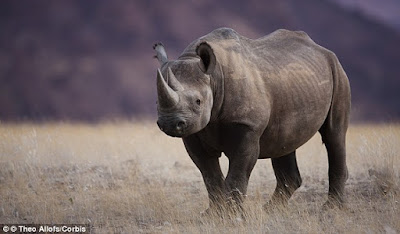 |
| White Rhino |
Recently, one of the last four northern white rhinos in the
world died in captivity. Now only three members of this endangered species
survive.
The efforts to conserve the Northern White Rhino were initially
fruitful, but the resurgence of poaching activity has now brought them to the
near extinction. These animals are killed for their horns, which are used to
make traditional medicines for many major human diseases and also to make
decorative articles.
Actually, the white rhino is not really white. It is grey.
There is very little difference in the colour of the black rhino and the white
rhino. Then why is it called so? The answer to this lies in the more
appropriate name of the white rhino: it is also called the square-lipped
rhinoceros.
When Dutch settlers in Africa saw this species of
rhinoceros, they realized that these had a wider mouth than the other rhinos.
So the Dutch called these rhinos ‘wijd rhinos’. ‘Wijd’ in dutch means ‘wide’.
However, the English settlers that followed them mistranslated the word ‘Wijd’
word as ‘White’ – hence the name ‘White Rhino’.
The White rhinos have a wider squared upper lip, which helps
them to bite off short grass. The black rhino on the other hand as a pointed
upper lip which helps it to bite off leaves from trees.
Another theory about their name says that the white rhinos,
although actually grey, appear white because their backs are often covered with
white bird droppings.
One male and two female northern white rhinos left in this world
are currently kept captive under high security in a conservatory in Kenya, to
protect them from poachers.
 | |||
| Black Rhino |
References:




